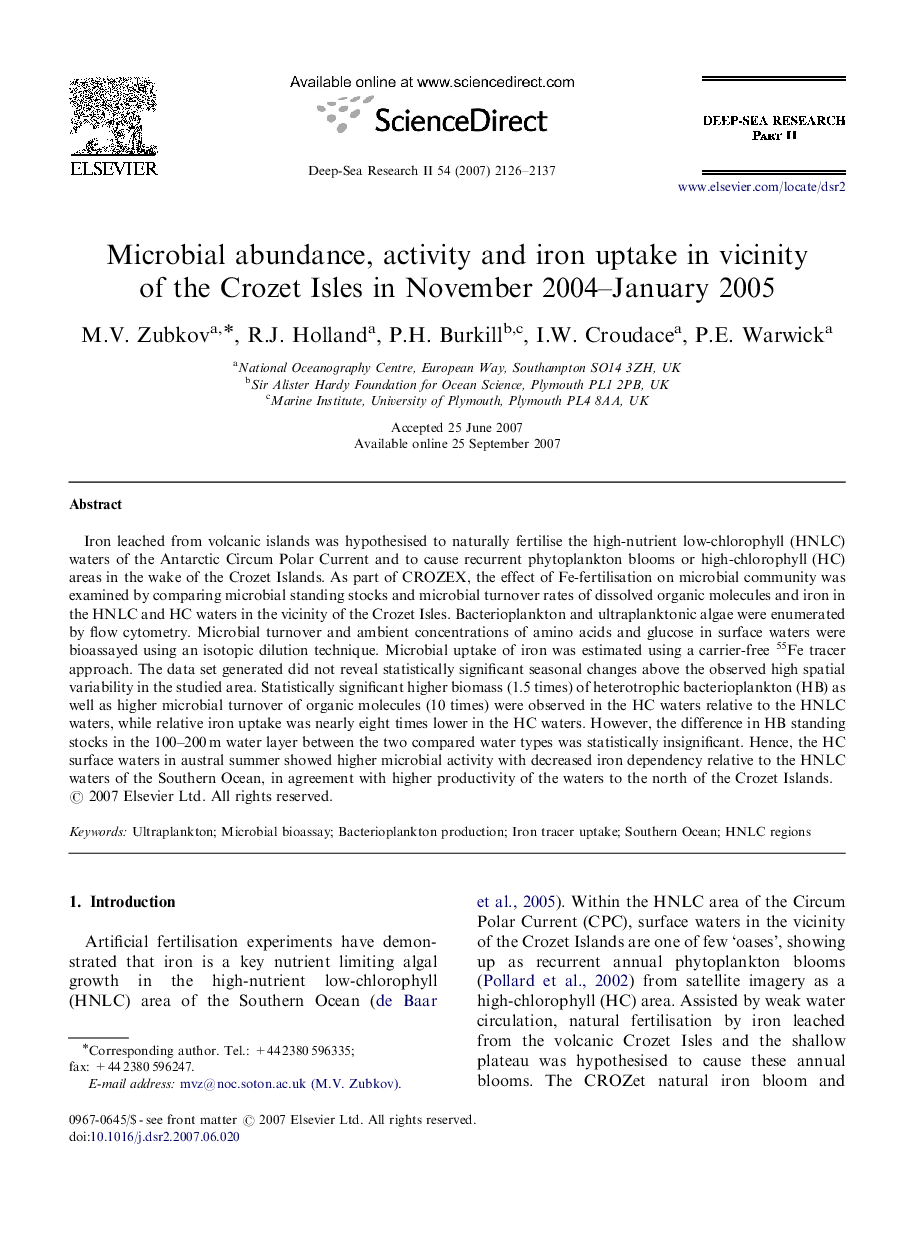| Article ID | Journal | Published Year | Pages | File Type |
|---|---|---|---|---|
| 4537663 | Deep Sea Research Part II: Topical Studies in Oceanography | 2007 | 12 Pages |
Iron leached from volcanic islands was hypothesised to naturally fertilise the high-nutrient low-chlorophyll (HNLC) waters of the Antarctic Circum Polar Current and to cause recurrent phytoplankton blooms or high-chlorophyll (HC) areas in the wake of the Crozet Islands. As part of CROZEX, the effect of Fe-fertilisation on microbial community was examined by comparing microbial standing stocks and microbial turnover rates of dissolved organic molecules and iron in the HNLC and HC waters in the vicinity of the Crozet Isles. Bacterioplankton and ultraplanktonic algae were enumerated by flow cytometry. Microbial turnover and ambient concentrations of amino acids and glucose in surface waters were bioassayed using an isotopic dilution technique. Microbial uptake of iron was estimated using a carrier-free 55Fe tracer approach. The data set generated did not reveal statistically significant seasonal changes above the observed high spatial variability in the studied area. Statistically significant higher biomass (1.5 times) of heterotrophic bacterioplankton (HB) as well as higher microbial turnover of organic molecules (10 times) were observed in the HC waters relative to the HNLC waters, while relative iron uptake was nearly eight times lower in the HC waters. However, the difference in HB standing stocks in the 100–200 m water layer between the two compared water types was statistically insignificant. Hence, the HC surface waters in austral summer showed higher microbial activity with decreased iron dependency relative to the HNLC waters of the Southern Ocean, in agreement with higher productivity of the waters to the north of the Crozet Islands.
